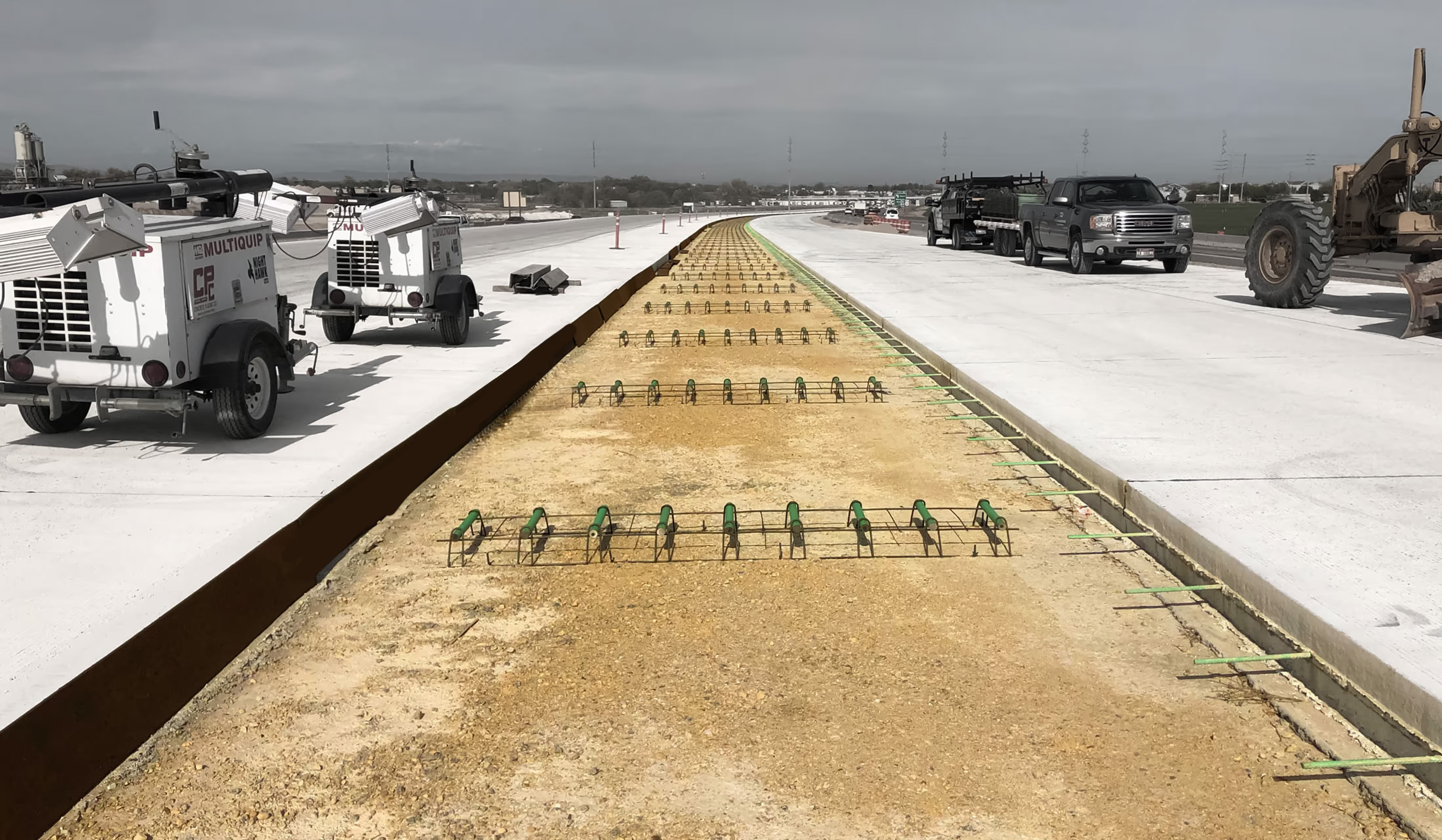Load Transfer
American Highway’s load transfer solutions, featuring the Diamond Dowel® System, ensure superior joint stability and durability in concrete highways, minimizing spalling and cracking under heavy traffic.
American Highway’s load transfer solutions, featuring the Diamond Dowel® System, ensure superior joint stability and durability in concrete highways, minimizing spalling and cracking under heavy traffic.

American Highway’s load transfer solutions, including the industry-standard Diamond Dowel® System, are designed for concrete highways exposed to heavy vehicle traffic. Achieving joint stability measurements of 0.01 in (25 mm), as noted in industry sources, the Diamond Dowel® System optimizes load transfer across construction joints in concrete pavement, reducing joint spalling and random cracking. Engineered for easy installation, these solutions use tapered plate dowels to distribute weight, enhancing durability while minimizing labor costs and improving worker safety. Ideal for high-traffic highways, American Highway’s products ensure maintenance-free, long-lasting performance in demanding conditions.
Welded dowel assemblies are steel dowel bars arranged in a frame spaced at proper intervals and at the midpoint of the pavement thickness. This device can address all of the problems inherent in adequately transferring the load from one pavement section to the next.
Welded dowel assemblies are steel dowel bars arranged in a frame spaced at proper intervals and at the midpoint of the pavement thickness. This device can address all of the problems inherent in adequately transferring the load from one pavement section to the next.
Dowel bars are short steel bars that provide a mechanical connection between slabs without restricting horizontal joint movement. They increase load transfer efficiency and reduce joint deflection and stress in the approach and leave slabs.
Welded dowel assemblies are steel dowel bars arranged in a frame spaced at proper intervals and at the midpoint of the pavement thickness. This device can address all of the problems inherent in adequately transferring the load from one pavement section to the next.
Dowel bars are short steel bars that provide a mechanical connection between slabs without restricting horizontal joint movement. They increase load transfer efficiency and reduce joint deflection and stress in the approach and leave slabs.
Tie bars are deformed rebars or connectors used for holding faces of rigid slabs in contact to maintain aggregate interlock. Tie bars are not load transferring device.
Similar to welded dowel assemblies, a tie bar assembly (TBB) are simple truss structures used to hold tie bars at the appropriate height before PCC placement.
Plate dowel baskets for quick, safe installation and load transfer at saw-cut joints in new construction.
The American DT™ basket assembly is a more sustainable and cost-effective option, using less steel than single-taper baskets or traditional mesh. The American DT™ basket provides more steel at the sawcut joint interface where it is needed most for load transfer. Designers should consider the construction methodology and tolerances when choosing a double-taper or single-taper basket for a project. The American DT™ basket assembly requires precise basket positioning to ensure maximum steel at the joint interface. Project designs should incorporate the American Diamond™ system at formed construction joints.
Load Transfer Findings
All dowel types transferred 80% – 90% of the load across the joints. Medium elliptical steel dowel bars were equally adequate, if not better than standard round dowel bars at
transferring load across the transverse joints.
Doweled joints provide high and constant LTE, controls faulting
There are many advantages for the use of concrete on low volume roads. The technical data provided in this section discussed the two most important aspects of concrete pavement design; slab thickness and jointing.
This guide provides a summary of the factors and design theories that should be considered when designing dowel load transfer systems for concrete pavement systems (including dowel basket design and fabrication) and presents recommendations for widespread adoption (i.e., standardization). Development of the guide was sponsored by the National Concrete Consortium with the goal of helping practitioners develop and implement dowel load transfer designs based on knowledge about current research and best practices.
